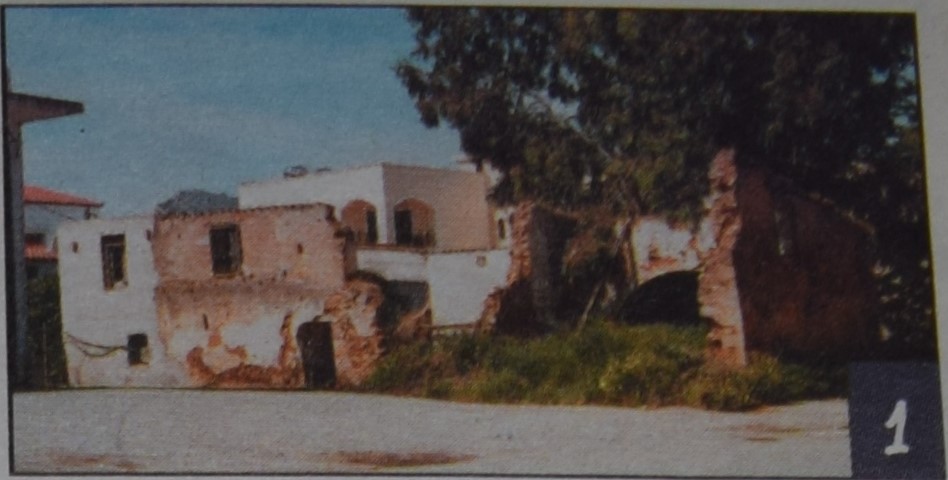The metochi estates: Metochi Tsigkris
City
Migration Period
City Narratives
Date
Tag
Full Description
The Tsigkris metochi estate is located in the area of Mournies, in the plains south of the city of Chania. This used to be an area with many small metochi estates most of which do not operate as agricultural production units anymore and their buildings are dilapidated. At the Tsigkris estate there are now but ruins of the metochi facilities, as can be seen in the recent photograph.
The estate was characterised as exchangeable after 1924. Several refugees were rehabilitated there, following the common practice of dividing the metochi manor in strips and granting them to families. Similarly, the land around the metochi was divided into small plots and granted to the refugees to grow crops. Panagiotis Chamourikos remembers the room where he lived with his mother: ‘A long, narrow space from here all the way to the back. At the back there was an orchard. That’s where we lived when we were kids and at night, we covered ourselves with tarp. The water was leaking through the old roof tiles, so we used tarp to cover ourselves. The floor was sagging a bit. It was a dirt floor and with all the water coming in, we stepped on it and it hardened. There was a fireplace in the corner where my mother cooked, if there was anything to cook. […] We couldn’t afford food. There was a tall mulberry tree that we climbed and ate the mulberries. We ate blackberries. There was also a wild pear tree… it grew really small pears, but you couldn’t eat them right off the tree. They had to fall, rot, mature and then we ate them. That was our food’.
Running a metochi estate required co-operation among the rehabilitated families in order to utilise the farming equipment, the facilities, the warehouses, the water wells, etc. As becomes clear from Panagiotis Chamourikos’ interview, an agricultural rehabilitation scheme that included non-agrarian families and families without labourers resulted in them struggling to survive and becoming dependent on their neighbours.
As a result, the metochi estates gradually lost their agrarian character and could no longer guarantee self-sufficiency like they did for their previous owners who operated them as a single production unit. The dwelling on the Tsigkris estate was eventually abandoned, just like the ones on other metochi estates (Kokkino Metochi, Metochi Barbou), namely the estates that became exchangeable properties. At the same time, the metochi farmlands were fragmented even further with every generation and today have either been turned into land plots for development or are used by their owners as complementary sources of income.
Bibliography
Manolis Manousakas, ‘Photo-retrospectives in the plains of Chania. 206. The Mournies Metochi estates’, Routes supplement, Chaniotika Nea (07/03/2009).
Remembrance. The metochi estates of the Chania plains: what is lost and what remains, directed by: Sofia Kassari (2021).
Interview by Panagiotis Chamourikos, excerpt from the unedited material for the film Remembrance. The metochi estates of the Chania plains: what is lost and what remains, Researched and Directed by: Sofia Kassari (2021).

